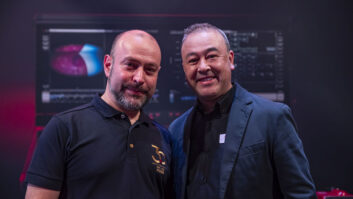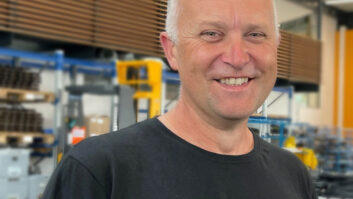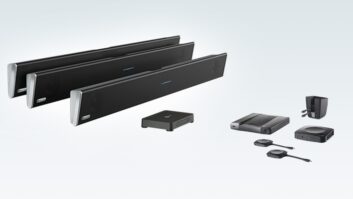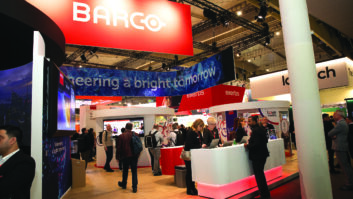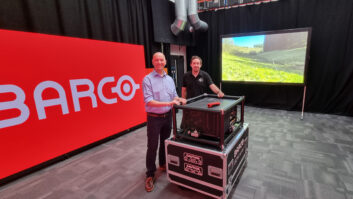High on the list of technologies that delivered such a memorable and moving London 2012 opening ceremony were the ‘pixels’ that turned every seat in the Olympic Stadium into part of a giant video screen. These were used for colour effects – such as a Union Flag when the Queen and James Bond apparently parachuted into the stadium; for video – including rippling effects during a section related to the sea; and animated graphics, such as displaying song lyrics.
Each seat was equipped with a tablet containing a 3×3 array of LEDs. These – all 70,500 of them – were manufactured by Tait Technologies, using the Barco FLX platform. Fitted with handles, the tablets could be removed from their holders and held by hand – as happened during a section of audience participation paddles were waved to produce a shimmering effect. The tablets measure 134mm square, and the pixel pitch is 50mm. Each pixel is individually programmable. The viewing angles are 180º both horizontally and vertically.
Although the pixel tablet is part of Tait’s rental inventory, the set-up at the Olympic Stadium, for the eight-week duration of the Olympics and Paralympics, was treated as a permanent installation. Some 370km of cabling were installed by a local ten-person crew over five weeks. In all, the system installation took ten weeks with five technicians and six local crew members.
Frederic Opsomer, CEO of Tait Technologies, drove the development of the LED tablets. “The assembly of dispersed LED pixels to form very large video images has been with us for some time,” he said. “But never before has it been done on such a scale, and with such organic animation” – referring to the handheld element of the evening’s programme.
Pixel mapping of the content was carried out on the Ai Infinity Server from Avolites/Immersive. “We chose Ai from Avolites because of Avolites’ substantial and long history in the field of entertainment; and quite simply this is one of the only server systems that can handle mapping on such huge scale,” said Opsomer. “The Olympics was a one-shot event – it had to be perfect – and the strength of the company reputation is reassuring to all those involved. Managing this volume of mapping is easy with the Ai software.”
Content for the pixel tablets was provided by London-based digital imaging services provider Crystal CG International. Opsomer added that the demands on the equipment were high. “To work for such an event, the product has to be waterproof to IP65, safe to use, durable.” Stringent EMC testing was also required: “Testing at the independent EMC laboratory in Belgium was exhaustive, but it had to be; the implications of seventy-thousand plus devices for the RF environment are of potential nightmare proportions,” he said.
“The LEDs themselves are extremely durable; we might expect them to work for ten years in continuous use. Because the Olympics placed a firm focus on sustainability we have designed this product with an afterlife in mind.”
www.barco.com
www.crystalcg.co.uk
www.immersive.eu/ai/
www.taittechnologies.com

